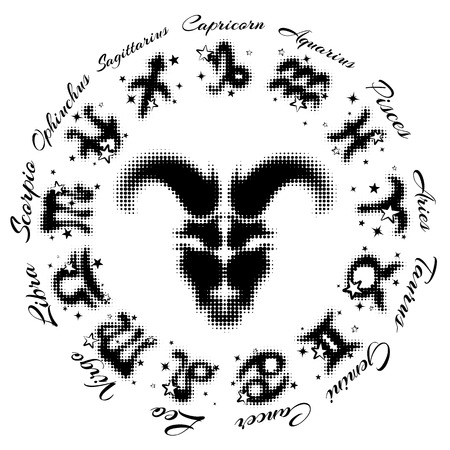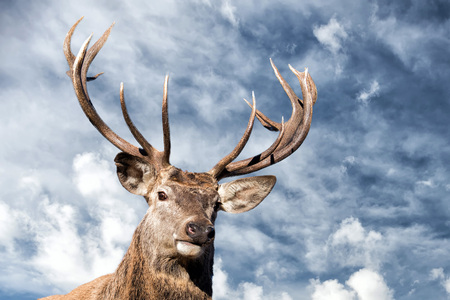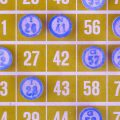Introduction to Prophetic Animals in British Folklore
The intricate relationship between animals and humans has long been woven into the fabric of British folklore, where creatures both wild and domestic have often been cast as omens, messengers, or even bearers of prophecy. This tradition, rooted in centuries of observation and superstition, reflects a uniquely British approach to understanding the world through the lens of nature’s signs. From ancient Celtic beliefs to mediaeval chronicles and rural superstitions still whispered today, the notion that animals possess an uncanny ability to predict or reflect future events persists throughout the United Kingdom’s cultural history. The appearance, behaviour, or even mere presence of certain animals—whether it be a solitary raven perched upon a church spire or a fox crossing one’s path at dawn—has historically been imbued with meaning far beyond the ordinary. These perceptions are not merely idle tales but form a system by which communities once interpreted and responded to uncertainty, threat, or hope in their everyday lives. By tracing the historical roots and cultural significance of prophetic animals within British folklore, we uncover not only the enduring power of storytelling but also a deeply ingrained respect for the rhythms and mysteries of the natural world—a theme that continues to shape British identity and collective memory.
2. Iconic Creatures and Their Meanings
British folklore is replete with tales of animals whose appearances are thought to herald significant changes, offer warnings, or bestow blessings. Among the myriad creatures woven into the tapestry of these traditions, the fox, raven, and hare stand out for their enduring associations with prophecy, luck, and fate. Understanding their symbolic roles requires an exploration not only of age-old stories but also of the ways in which these creatures have been interpreted across regions and generations.
The Fox: Cunning Harbinger
The fox holds a unique place in British lore as both a trickster and a guide between worlds. Sightings of a fox, particularly at dawn or dusk, were historically read as omens—a signal that change was imminent or that cunning would be required to overcome future obstacles. In some rural communities, the fox’s appearance near a homestead might suggest impending news or unexpected visitors. Its dual nature—mischievous yet wise—mirrors the unpredictability of fate itself.
The Raven: Messenger of Fate
Few birds carry as much symbolic weight in British tradition as the raven. Associated with mystery and foreboding, ravens are often seen as messengers from other realms. In Celtic and Norse-influenced regions of Britain, the presence of a raven was sometimes believed to foretell death or great change; conversely, seeing a raven fly overhead could also be interpreted as protection by ancestral spirits. The continued presence of ravens at the Tower of London underscores their enduring connection to national destiny and royal fortune.
The Hare: Symbol of Transformation
The hare occupies a liminal position in British folklore, frequently linked with the supernatural and seasonal cycles. Regarded as a creature of both luck and enchantment, hares were thought to possess prophetic abilities—especially when observed under unusual circumstances such as during daylight hours or circling fields at night. Some traditions held that witches could shape-shift into hares to evade capture, blurring the line between natural behaviour and magical intervention.
Summary Table: Prophetic Animals in British Folklore
| Animal | Symbolic Meaning | Common Prophetic Associations |
|---|---|---|
| Fox | Cunning, adaptability | Imminent change, need for wisdom |
| Raven | Mystery, fate, protection | Approaching death or transformation; ancestral messages |
| Hare | Liminality, transformation | Luck (good or bad), supernatural influence |
Cultural Continuity and Local Variations
Although these animal symbols are broadly recognised across Britain, local interpretations often add layers of meaning. For example, Cornish legends may emphasise the fox’s role in leading lost souls to safety, while Scottish tales might focus on the hare’s connection with ancient goddesses. Through this intricate web of beliefs, prophetic animals remain vital markers for interpreting nature’s signs within British life.

3. Nature’s Signs: Interpreting Animal Behaviour
For centuries, rural communities across Britain have closely observed the behaviour and appearance of local wildlife, drawing upon a deep-rooted tradition of reading nature’s signs. Animals were not merely passive elements in the landscape; they served as living barometers and oracles, their actions interpreted as messages about future events, weather changes, or shifts in fortune.
The Predictive Role of Birds
Among all creatures, birds have held a particularly prominent place in British folklore. The arrival of swallows, for instance, was seen as a harbinger of spring and fair weather, while their early departure signalled an approaching harsh winter. The call of the cuckoo was eagerly awaited each year; its first song was said to bring luck and mark the beginning of growth and abundance. Conversely, the persistent hooting of an owl near a homestead often stirred unease, believed by many to foretell misfortune or even death within the household.
Mammals and Their Messages
Mammals too have played their part in this intricate web of interpretation. The appearance of foxes during daylight hours could be seen as an omen of change or disruption, while hares crossing one’s path might predict unexpected news or a twist in fate. Badgers emerging from their setts before sunset were sometimes viewed as indicators of impending storms, their sensitive behaviour thought to be attuned to subtle environmental shifts beyond human perception.
Aquatic Life and Weather Lore
Even aquatic creatures found their way into rural prognostications. Fisherfolk along Britain’s rivers watched trout and eels for unusual activity—leaping fish or erratic swimming patterns were taken as signs of incoming rain or floods. Similarly, frogs venturing far from water sources were read as warnings of prolonged wet weather ahead.
Cultural Continuity and Adaptation
While scientific understanding has since provided alternative explanations for animal behaviours, these traditional interpretations persist in rural memory, woven into local sayings and seasonal practices. By observing animals with intent and curiosity, generations have constructed a nuanced system for making sense of nature’s rhythms—one that reflects both the unpredictability of the British climate and the enduring desire to find meaning in the world around us.
4. Regional Variations and Local Legends
One of the most fascinating aspects of prophetic animals in British folklore is the remarkable diversity found across different regions. Each area, from the rugged highlands of Scotland to the rolling fields of the English countryside, has developed its own unique interpretations and stories surrounding animal omens. These variations not only reflect local wildlife and landscape but also embody the distinct cultural identities and historical experiences of each community.
Regional Interpretations: A Comparative Overview
The significance attributed to specific animals—and the manner in which their appearances are interpreted as omens—can vary considerably between regions. In Scotland, for instance, the sighting of a white stag is traditionally regarded as an augury of significant change or a signal that one is on a sacred quest. Conversely, in rural England, the appearance of a hare crossing one’s path before a journey is often seen as a warning to turn back or postpone travel.
| Region | Animal | Prophetic Meaning | Cultural Context |
|---|---|---|---|
| Scottish Highlands | White Stag | Sign of transformation or spiritual journey | Linked to ancient Celtic beliefs and royal hunts |
| English Countryside (East Anglia) | Hare | Omen of misfortune if it crosses your path | Tied to witchcraft lore and agricultural superstitions |
| Cornwall | Piskie-led Birds (e.g., Robins) | Bearing news from the otherworld or signalling death | Connected to Cornish fairy traditions and mining communities |
| Northern England (Yorkshire) | Barn Owl | Foretells imminent weather changes or death in the village | Reflects dependence on farming and weather prediction |
| Welsh Valleys | Raven or Crow | Harbinger of battle or ill fate, but also wisdom and prophecy | Rooted in Druidic lore and bardic storytelling |
The Influence of Landscape and Local History
The differences in interpretation are closely linked to regional landscapes and livelihoods. Highland legends often emphasise animals adapted to wild, remote settings, while lowland tales feature creatures commonly encountered near farms or villages. The persistence of mining folklore in Cornwall, for example, means that bird omens are frequently tied to underground dangers or supernatural intervention.
Evolving Traditions and Contemporary Relevance
While many regional beliefs have faded with modernisation, some local legends remain surprisingly resilient. Seasonal festivals, local museums, and rural storytelling sessions continue to keep these traditions alive. Moreover, renewed interest in folk customs has prompted fresh appreciation for how these animal omens once helped communities interpret natural phenomena and navigate uncertainty.
5. From Folklore to Modern Day: Enduring Beliefs
The legacy of prophetic animals in British folklore is not confined to dusty tomes or the distant past; it continues to shape contemporary life in subtle yet persistent ways. In rural communities, superstitions involving animal signs are woven into daily routines and seasonal rituals. For example, the sighting of a single magpie still prompts many to recite, “One for sorrow, two for joy,” reflecting an unbroken chain of belief stretching back generations. Farmers may look to the behaviour of cows or birds as indicators of impending weather changes, echoing centuries-old practices that combine observation with inherited wisdom.
The Rural-Urban Divide and the Persistence of Tradition
While countryside traditions remain robust, urban environments have adapted these beliefs into new forms. Black cats crossing one’s path are regarded with suspicion or luck—depending on regional variation—even among city dwellers. Pubs and homes often display horseshoes for good fortune, their origin rooted in protective folklore about warding off evil spirits. The symbolism has evolved, but its cultural resonance endures, bridging rural customs and metropolitan lifestyles.
Representation in Popular Media
British literature, television, and film frequently draw upon these animal prophecies to add layers of meaning or atmosphere. Iconic series such as “The Animals of Farthing Wood” and adaptations of classic works like “Watership Down” employ animal symbolism to explore fate and foreshadow events. Documentaries and children’s programmes continue to reference traditional sayings about weather-predicting frogs or wise owls, embedding folklore within the collective consciousness from an early age.
Contemporary Reflection and Adaptation
Modern interpretations sometimes challenge or reinterpret these folk beliefs. Environmental movements have reframed animals once seen as omens—like ravens or foxes—as symbols of resilience and ecological warning. Social media trends, such as sharing images of unusual animal behaviour during extreme weather, show how ancient methods of reading nature’s signs adapt fluidly to new technology. Thus, while the literal belief in prophecy may have diminished, the narrative power of animals as harbingers persists, shaping both communal identity and individual outlooks throughout Britain today.
6. Conclusion: Reading Nature’s Signs in a Modern World
The enduring fascination with prophetic animals in British folklore offers more than quaint tales; it reveals a deep-seated cultural tendency to seek meaning and guidance in the natural world. For centuries, Britons have looked to the flight of birds, the appearance of foxes, or the behaviour of cats as omens—sources of insight into personal fate or communal fortune. This tradition, woven through rural superstition and literary reference alike, underscores a uniquely British relationship with nature: one that balances respect for its unpredictability with a desire to decode its messages.
Such practices speak to a worldview where fate and free will are constantly negotiated. Reading animal signs reflects both humility before forces beyond human control and a pragmatic hope that nature might offer warnings or advice. In the modern era, while scientific understanding has largely replaced superstition, the impulse endures—manifesting in everything from weather lore to wildlife conservation. These traditions remind us that nature is not merely background to human life but an active participant in our stories and destinies.
Ultimately, the reading of nature’s signs encapsulates a peculiarly British blend of scepticism and wonder. It invites reflection on how we interpret the world around us—balancing rationality with imagination, and fact with folklore. As we navigate contemporary challenges, such as climate change and loss of biodiversity, this respectful attentiveness to animal behaviour may offer not just nostalgia, but renewed relevance: encouraging us to listen more closely to what nature has always tried to tell us.


